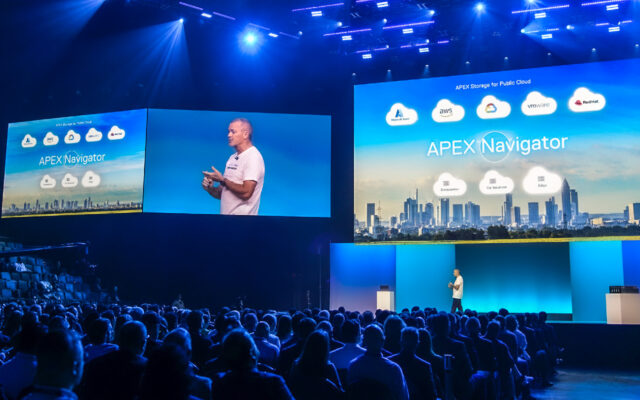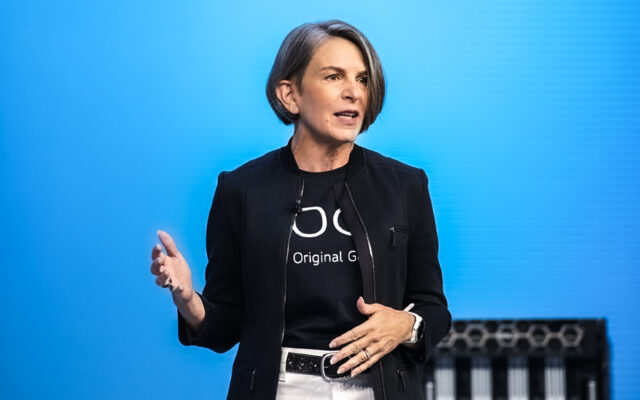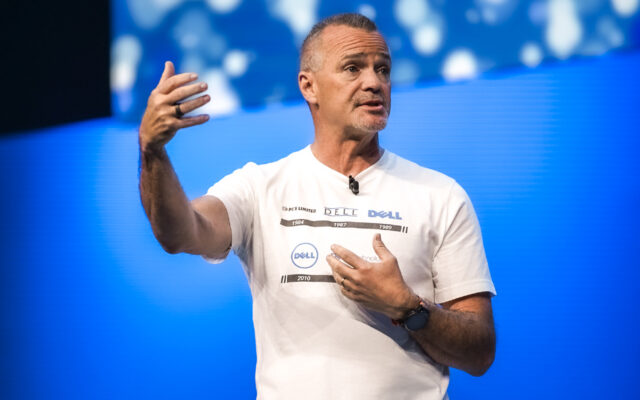To understand Dell Technologies approach to multicloud, one must understand data as a substrate, the soil from which multicloud solutions grow, according to vice chairman and co-COO Jeff Clarke.
This philosophy moves beyond the features and tools and into broader, more substantive questions about how organizations handle the data they produce.
“We believe that if you get your handling of the data right, everything else from access to tools, choice of cloud to your ability to control and manage your costs becomes far more achievable,” Clarke told the Dell Technologies World audience Tuesday in Las Vegas.
Clarke said Dell’s multicloud architecture should be thought of as a common storage layer, “a data substrate, if you will.” That substrate connects data with clouds and workloads and allows efficient mobility between on-prem and public cloud storage, he said, all while minimizing the need to refactor applications or retrain staff.
Clarke predicted organizations will come to rely on AI to optimize costs and workload placement and avoid service disruptions.
AI has been a prominent theme at Dell Technologies World, and Clarke Tuesday took the wraps off Project Helix, a collaboration with NVIDIA to offer a set of solutions that make it easier for enterprises to use Generative AI on-premises.
In a pre-recorded feature, NVIDIA CEO Jensen Huang said AI will change the way organizations do business as dramatically as the PC, the internet and mobile technology.
“Every company will be able to put AI to use to revolutionize products and their company,” Huang said. Project Helix, he said, “will help every company be an AI factory, produce their domain-specific intelligence, their expertise at light speed and at scale.”
Kari Briski, NVIDIA vice president of software project management for AI, joined Clarke on stage to demonstrate how organizations can use AI. She said AI tools properly trained on enterprise-specific data and “brand voice” will lead to better customer experience, better return on investment and more natural interactions.

Project Helix was one of several announcements Dell made Tuesday, including:
-
- Dell NativeEdge (formerly Project Frontier), a new edge operations software platform, to help businesses simplify, secure and automate edge infrastructure and application deployment.
- Dell Validated Design for Retail Edge, Dell Private Wireless with Airspan and Druid and updates to Dell Enterprise SONiC Distribution.
- Project Fort Zero, a new initiative that will deliver an end-to-end Zero Trust security solution validated by the U.S. Department of Defense. A new service, PSX for Backup, simplifies the implementation and maintenance of backup environments to enable data recovery.
Gil Shneorson, Dell vice president, edge portfolio and solutions, said the new edge solutions will help organizations reduce cost while optimizing the customer experience.
With a scenario in a hypothetical grocery store, Shneorson demonstrated the importance of making edge technology both thorough and simple. “The sheer number of devices, workloads and locations mean [edge solutions] need to be affordable and secure… simply plug in network and power and walk away.”
Clarke was also joined on stage by Herb Kelsey, Dell’s industry chief technology officer for government, who discussed Project Fort Zero, and by Dell CIO Jen Felch, who demonstrated how the IT strategies used in-house at Dell become Dell Technologies solutions.

Felch’s organization is working with AI tools today with an eye toward how they may best be used by customers soon.
“Developers have a great opportunity to benefit from [AI],” she said. “We’re applying Generative AI to our processes… building it directly into our workflow.” Felch said AI has great potential to help developer productivity and that the technology ought to be easy for everyone in the organization to use.
Clarke said he hoped attendees of the tech-focused keynote walked away both more informed about Dell’s architectural direction and pleasantly surprised by the day’s announcements.
“I hope you walk away with an impression that we continue to turn these visions into real products and real offers in the marketplace,” Clarke said, adding that the company is committed to “addressing your needs by how we operate in this multicloud environment.”


